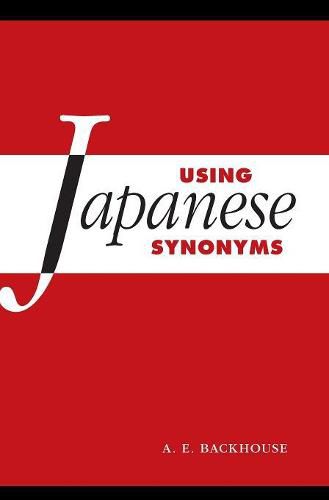Readings Newsletter
Become a Readings Member to make your shopping experience even easier.
Sign in or sign up for free!
You’re not far away from qualifying for FREE standard shipping within Australia
You’ve qualified for FREE standard shipping within Australia
The cart is loading…






Being a successful speaker of a given language involves control of the meaning and use of vocabulary items, taking in their lexical content (what phenomena they refer to), combinatorial behaviour (what items they occur with) and situational characteristics (e.g. as colloquial or formal terms). This essential reference book provides clear information on these aspects for around three hundred groups of Japanese near-synonyms, supplemented by a wide range of authentic examples. The result is a clear profile of the meaning and use of each item, highlighting similarities and distinctions among neighbouring terms and expanding learners’ lexical range. The book is designed primarily for English-speaking learners, and the selection of groups and items and the overall treatment adopted reflects the author’s extensive experience in teaching Japanese to English speakers. Japanese forms and examples appear in both romanisation and Japanese orthography, and the bilingual indexes allow readers to locate synonyms quickly and easily.
$9.00 standard shipping within Australia
FREE standard shipping within Australia for orders over $100.00
Express & International shipping calculated at checkout
Being a successful speaker of a given language involves control of the meaning and use of vocabulary items, taking in their lexical content (what phenomena they refer to), combinatorial behaviour (what items they occur with) and situational characteristics (e.g. as colloquial or formal terms). This essential reference book provides clear information on these aspects for around three hundred groups of Japanese near-synonyms, supplemented by a wide range of authentic examples. The result is a clear profile of the meaning and use of each item, highlighting similarities and distinctions among neighbouring terms and expanding learners’ lexical range. The book is designed primarily for English-speaking learners, and the selection of groups and items and the overall treatment adopted reflects the author’s extensive experience in teaching Japanese to English speakers. Japanese forms and examples appear in both romanisation and Japanese orthography, and the bilingual indexes allow readers to locate synonyms quickly and easily.